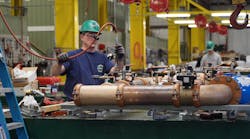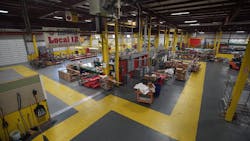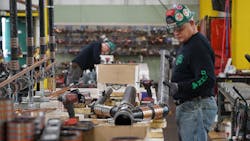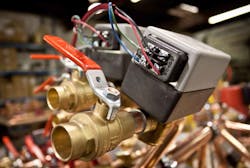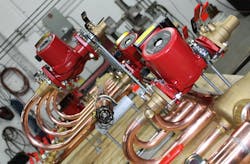Latest from Plumbing Contractor
Sponsored
The Evolution of a Prefab Shop—Inception to Post-Pandemic
CANTON, MASS.—At E.M. Duggan, safety has and will always be its main concern for its workers. Prefabrication shops offer controlled environments, and what used to be assembled at an open high-rise, under construction, is now being done in a safe workplace environment. “As a company, it is also imperative to make it easier for our workers, whether it is state-of-the-art equipment or gear,” says Len Monfredo, Principal, E.M. Duggan Inc. “Prefab shops breed efficiency, all of that plays a role in delivering the best product to our clients.”
Moreover, in a time where supply chain inconsistencies are prevalent, prefab shops also allow E.M. Duggan to store product that is needed, and easily assemble them as projects come up. “We can forecast what will be needed and order well in advance to make sure E.M. Duggan is delivering on time,” says Monfredo.
The Prefab Roots
In 2012, E.M. Duggan opened the HVAC prefab shop with five orbital welding stations that has now increased to eight. That investment has had a major return for the company’s clients because the machine precisely turns the pipes as welded, making it easier, safer and more efficient for its workers. E.M. Duggan also added monitors to both shops, which allows workers to see what is happening in real-time, on a large screen, rather than stopping to look up drawings on cumbersome documents. More importantly, it allows one to see an entire system, which speeds up the process as well as making it more precise.
In 2013, E.M. Duggan opened the plumbing prefab shop that’s equipped with PlanGrid workstations and workbenches. “The extremely organized stations make us much more efficient. We invested heavily in equipment that includes hydraulic cast iron and T-Drill cutting stations. These worktables and stations make it easier and safer for the workers,” says Monfredo.
Powering Through the Pandemic
Prefabrication offers every project an advantage, allowing contractors to work on numerous major construction projects. For E.M. Duggan, it’s full steam ahead. For instance, two projects in particular rely heavily on the prefab process. The mechanical contractor is in the process of working on Winthrop Center, as developer MP Boston came up with the concept to create luxury residences and a mixed-use building in downtown Boston.
At the same time, E.M. Duggan is working on the Boston University stack-of-books building. “Both buildings are unique and challenging, but our shops allow us to safely tackle both high profile projects in addition to all our other ventures. Without the prefab shops we would not be as efficient,” says Monfredo.
Lessons in Prefab, Hydronically Speaking
When working with prefabrication businesses, more stock is readily available and/or the use of alternate materials is an option. Another benefit of this would be having much longer timeframes to work with as prefab systems are usually started far earlier than the actual construction on the site. This allows more time for materials to be procured and delivered.
And what about COVID? “Although the pandemic did slow down most businesses, prefab companies were busy designing and manufacturing systems that would have otherwise been on hold,” says Fink. “This way, as the world economy comes to life, these projects are already on track to make up for lost time.”


